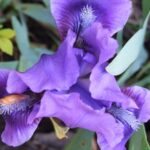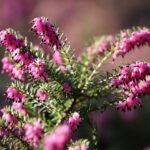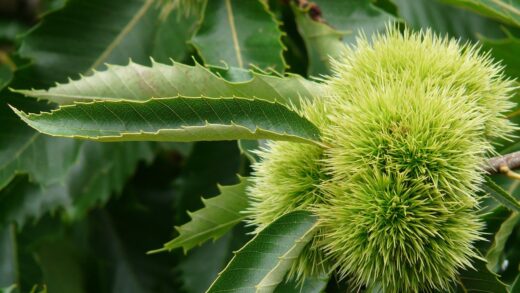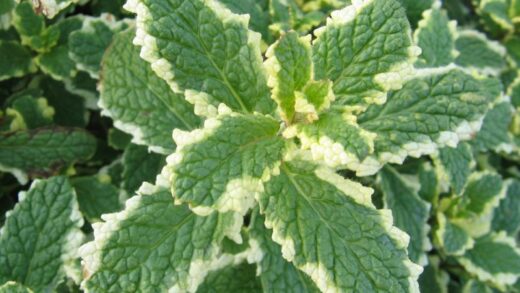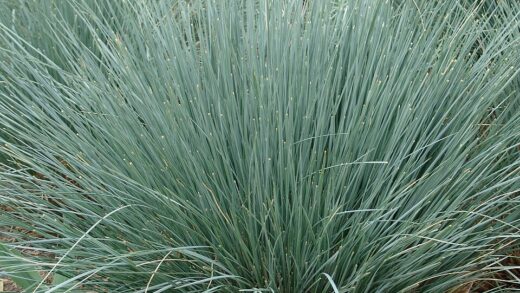Successfully guiding an Asian persimmon tree through the winter is a critical aspect of its cultivation, particularly in climates that experience freezing temperatures. While many varieties possess a surprising degree of cold hardiness, they are not invincible, and proper preparation is key to ensuring their survival and future productivity. The process of wintering involves more than just hoping for the best; it requires a proactive strategy to mitigate the potential damage from cold, wind, sun, and fluctuating temperatures. Understanding the tree’s vulnerabilities and implementing protective measures can make the difference between a thriving tree in the spring and one that has suffered significant setback or loss.
The primary challenge during winter is protecting the tree from damage caused by freezing temperatures. This is especially true for young, newly established trees, whose smaller mass and less-developed bark make them far more vulnerable than their mature counterparts. Cold injury can manifest in several ways, including damage to flower buds (which affects the next season’s crop), dieback of twigs and branches, and, most seriously, splitting or cracking of the trunk, a condition known as sunscald. These injuries not only harm the tree directly but also create entry points for diseases and pests.
The tree’s state of health and dormancy plays a significant role in its ability to withstand winter conditions. A tree that enters the winter in a state of stress—due to drought, nutrient deficiency, or disease—will be much more susceptible to cold damage. It is crucial to ensure the tree is well-hydrated before the ground freezes and to cease fertilization in the late summer or early autumn. Late-season growth spurred by excess nitrogen will not have sufficient time to harden off properly, making it extremely vulnerable to being killed by the first hard freezes.
Furthermore, the specific climate and microclimate of the planting location are major factors. A tree planted in a low-lying area where cold air settles will be at greater risk than one planted on a gentle slope. Similarly, a site exposed to harsh winter winds can cause desiccation and increase cold stress on the tree. Selecting a suitable variety for the region’s hardiness zone is the most important first step, but even a cold-hardy variety can benefit from additional protection, especially during its first few winters in the ground.
Understanding cold hardiness in persimmons
Cold hardiness in persimmon trees is a complex trait that refers to their ability to survive sub-freezing temperatures without sustaining damage. This ability is not static; it varies significantly between different species and cultivars, and it also changes throughout the dormant season. The American persimmon (Diospyros virginiana) is generally much more cold-hardy than the Asian persimmon (Diospyros kaki), tolerating much lower winter temperatures. Within the Asian persimmon species, there is also a wide range of hardiness, with some varieties being suitable for colder climates while others are restricted to warmer regions.
More articles on this topic
A tree’s hardiness is developed through a physiological process called acclimation, which occurs in the autumn as days get shorter and temperatures gradually cool. During this period, the tree undergoes metabolic changes that prepare its cells to withstand freezing. It is crucial that this process happens gradually. A sudden, sharp drop in temperature in the early autumn before the tree is fully acclimated can cause significant damage, even at temperatures the tree could easily handle in mid-winter.
The state of dormancy is key to a persimmon’s winter survival. Once fully dormant and acclimated, a hardy persimmon variety can withstand surprisingly cold conditions. However, the tree is most vulnerable during the transition into dormancy in the fall and the transition out of dormancy in the late winter or early spring. A late spring frost that occurs after the buds have begun to swell or break can be particularly devastating, as it can kill the emerging flowers and young leaves, destroying the potential fruit crop for that year.
When selecting a persimmon variety, it is essential to choose one that is rated for your specific agricultural hardiness zone. This rating provides an indication of the average minimum winter temperature that the tree can tolerate. However, it is important to remember that this is just a guideline. Factors such as site selection, tree health, and sudden temperature swings can all influence a tree’s actual ability to survive the winter in a given location.
Preparing young trees for winter
Young persimmon trees, in their first two to three years after planting, require special attention to prepare them for winter. Their thin bark and less extensive root systems make them much more susceptible to cold injury and sunscald than mature trees. One of the most important protective measures is to wrap the trunk. Using commercial tree wrap, burlap strips, or plastic tree guards can insulate the trunk and protect it from the intense winter sun. This is particularly important on sunny winter days when the sun can warm the south and southwest sides of the trunk, causing the sap to flow, only for it to freeze rapidly when the sun sets, which can cause the bark to split.
More articles on this topic
Ensuring the young tree is properly hydrated before the ground freezes is another critical step. Water the tree deeply and thoroughly in the late autumn after the leaves have dropped but before the first hard freeze. This ensures that the root system has access to adequate moisture throughout the winter, which helps to prevent desiccation from dry winter winds. This final watering is one of the most beneficial things you can do to support the tree’s health through the dormant season.
Applying a thick layer of mulch around the base of the young tree after the ground has cooled but before it freezes solid offers significant benefits. A 10-15 centimeter layer of organic material like straw, wood chips, or shredded leaves helps to insulate the soil. This insulation moderates soil temperature fluctuations, protecting the shallow roots from repeated freezing and thawing cycles. The mulch should be pulled back slightly from the trunk itself to prevent moisture from accumulating against the bark, which could encourage disease or provide a haven for gnawing rodents.
For trees planted in particularly cold or exposed locations, creating a windbreak can offer additional protection. This can be as simple as driving a few stakes into the ground on the windward side of the tree and wrapping burlap around them. This temporary structure can significantly reduce the desiccating effect of harsh winter winds, which can dry out the branches and buds. These preparatory steps taken in the autumn can dramatically increase a young tree’s chances of emerging from winter unscathed.
Protecting mature trees in colder climates
Even mature persimmon trees can benefit from winter protection, especially those planted at the colder end of their hardiness range or during exceptionally severe winters. While the bark of a mature tree is thicker and more resistant to sunscald, painting the trunk and the lower portions of the main scaffold limbs with a white, water-based latex paint can provide excellent protection. The white color reflects the intense winter sunlight, keeping the bark temperature more stable and preventing the dangerous freeze-thaw cycles that lead to bark splitting.
Maintaining a layer of mulch over the root zone remains a beneficial practice for mature trees as well. While the deeper roots of an established tree are less vulnerable than those of a young tree, a good layer of mulch still helps to conserve moisture and insulate the upper root system. This is particularly important in winters with little snow cover, as snow is an excellent natural insulator. The mulch effectively serves as a substitute for a protective snow blanket.
Monitoring the tree during the winter is also important. After heavy snow or ice storms, it is advisable to gently brush off any excessive accumulation from the branches if it can be done safely. The weight of heavy, wet snow or ice can put immense strain on the branches, potentially causing them to break, especially on trees that have not been properly pruned to have a strong structure. However, never try to break off ice that is frozen solid to the branches, as this will likely cause more harm than good.
In the event of an unseasonably warm period in late winter followed by a forecast for a sudden, hard frost, it may be possible to protect the swelling flower buds on smaller mature trees. Covering the tree with a frost blanket or even a large sheet before sunset can help to trap radiant heat from the ground and may keep the bud temperature just above the critical freezing point. This is often impractical for large trees but can be a crop-saving measure for smaller, prized specimens.
Care after a winter freeze or damage
After the winter has passed and the threat of hard frost is over, it is time to carefully inspect the persimmon tree for any signs of cold injury. Look for discolored or shriveled bark, dieback on the tips of branches, and any cracks or splits in the trunk or major limbs. It is important to be patient and not rush to prune out what appears to be dead wood. Sometimes, branches that look lifeless may still have viable buds that will be slow to emerge, so it is best to wait until the tree has fully leafed out to make a definitive assessment.
Once you can clearly distinguish between the living and dead tissue, it is time to prune away the damaged wood. Make clean pruning cuts back to a point of healthy, living wood, ideally just above an outward-facing bud or a side branch. Removing the dead and damaged branches is important for the tree’s health, as this wood can become a potential entry point for diseases and insect pests. This remedial pruning helps to clean up the tree and directs its energy into producing new, healthy growth.
If the trunk has suffered from sunscald or frost cracks, the damage should be addressed to aid healing and prevent infection. Do not apply any paint or tar-based wound dressings, as these can trap moisture and hinder the natural callusing process. The best course of action is to use a sharp, sterile knife to carefully trim away any loose, dead, or ragged bark around the edges of the wound. This process, known as “tracing,” creates a clean, smooth edge that allows the tree’s cambium layer to form a callus over the wound more effectively.
After a particularly harsh winter, the tree may benefit from some extra care to help it recover its vigor. Ensure it receives consistent watering, especially if the spring is dry, and apply a balanced fertilizer to provide the nutrients needed to support new growth. A tree that has sustained winter injury is in a stressed state, and providing optimal growing conditions during the following season is the best way to help it recuperate, heal its wounds, and get back on a path to productivity.














